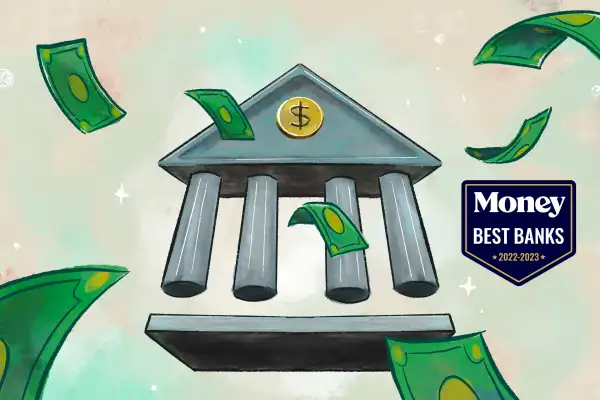Why Digital Banking Is Here to Stay

Much like smartphones, electric cars and food delivery apps, digital banking is here to stay — and it’s only getting more popular.
Of 2,211 adults surveyed by Morning Consult on behalf of the American Bankers Association (ABA) in September, 45% said mobile apps were their top choice for managing their bank accounts. Another 27% said they mostly used an internet browser on a laptop or PC. Just 14% of respondents said visits to a bank branch were their primary method of managing their accounts.
This is the third year in a row that customers preferred mobile banking over any other method, and it’s easy to see why.
Digital banking apps let customers do just about anything they could accomplish at a physical bank branch or ATM — from depositing checks to wiring money to paying bills to locking and unlocking a debit card — all from anywhere, at any time.
The pandemic accelerated the transition to online banking
While digital banking services have been steadily gaining popularity over the past years, the COVID-19 pandemic hastened the transition.
“Banks have always been at the forefront of technology,” says Jim Edrington, chief member engagement officer at the American Banking Association. As the pandemic shut down physical bank locations and kept people at home, that spirit of innovation “became even more of a necessity,” he says.
Amid the economic upheaval and uncertainty in 2020, Edrington says it was critical that banks let customers continue to access the services they needed to keep their financial lives in order.
And they did: A study by consulting firm Accenture found that half of banking customers interacted with their bank via a mobile app or website at least once a week in 2020, compared to a little less than a third before the pandemic. Data from a Federal Deposit Insurance Corporation (FDIC) survey shows that between 2017 and 2021, the share of households that used a mobile app as their primary method of banking more than doubled, from 15% to 44%.
The FDIC also suggests that government pandemic initiatives — like several rounds of stimulus checks and expanded unemployment benefits — may have encouraged many previously unbanked Americans to open an account and bank online. It’s not a stretch to imagine that an uncertain economic future — inflation, rising interest rates and a potential recession — will prompt Americans to keep a closer eye on their money this year.
Of course, that trend may depend on the banks themselves. A recent analysis from Deloitte pointed out that during the pandemic, the biggest reason a customer was likely to switch banks was a poorly designed mobile app. The digital banking experience “needs to be easy, it needs to be seamless, it needs to be intuitive,” Edrington says, and “it needs to be safe.”
Security is essential
As digital banking has exploded, so too has the potential for fraud. Thankfully, banks are responding in kind.
“We have seen a big expansion of security-related resources” from banks, says Julianna Sansevero, a banking analyst at the research firm Corporate Insight. Those resources include advice for customers about scams and how they can avoid them.
Many banks have also implemented tougher security measures like multi-factor authentication to help customers verify their identities when they log in.
What’s next for digital banking
As more and more people take their banking online, Sansevero says banks are also ramping up their resources around how to use the new digital tools — think virtual assistants like Bank of America’s Erica and Capital One’s Eno, or the ability to chat live with a customer service representative. Sansevero says she expects the capabilities of those virtual assistants to improve.
She’s also expecting banks to roll out more mobile features as younger customers begin using the platforms. And with mobile payments and paperless transactions on the rise, experts anticipate banks will improve their digital wallets, too.
Brick-and-mortar isn’t dead
Of course, the rapid transition to digital banking doesn’t mean physical bank branches will disappear any time soon. The FDIC’s survey data shows some customers — including lower-income households, less educated households, older households and rural households — are still much more likely to go into a physical bank location to manage their accounts.
The ABA’s Edrington notes that he’s seeing physical bank branches evolve into what he calls an “appointment-based” environment that can provide new types of services (like notaries, for instance) for customers, beyond the basic tasks they can accomplish online or with an app.
He even envisions banks using their physical spaces to host guest speaker series meetings for local groups like the Lions Clubs. “That's another evolution of the branch environment,” Edrington says. “How can [bank] real estate better serve different groups within the community?”
